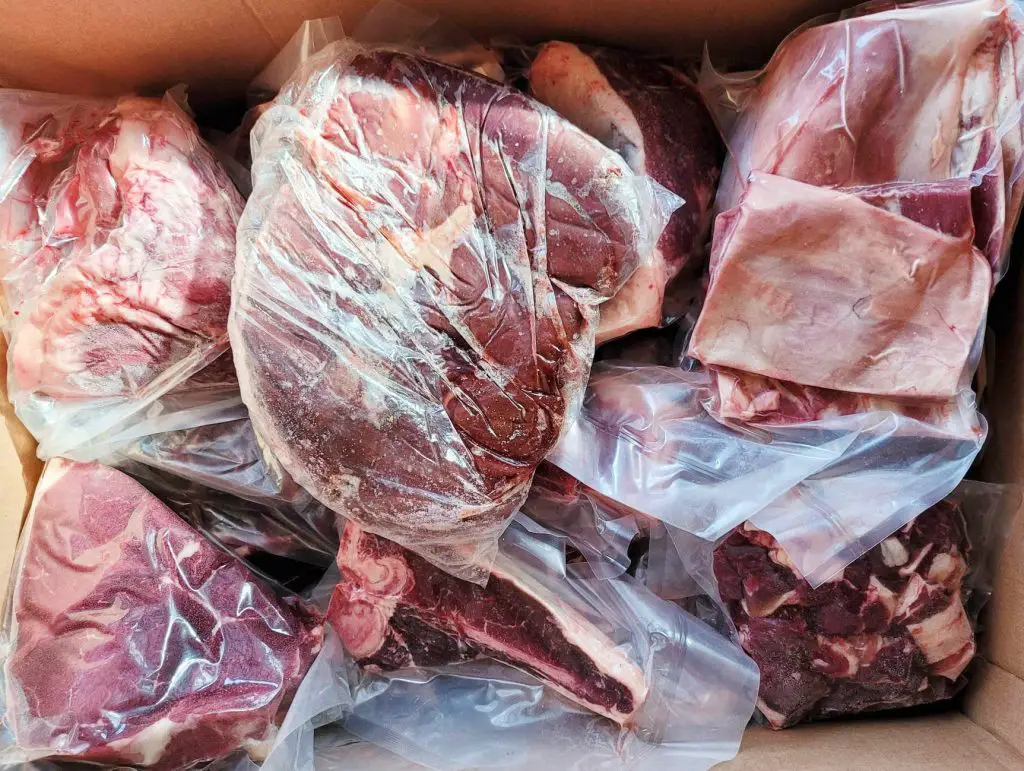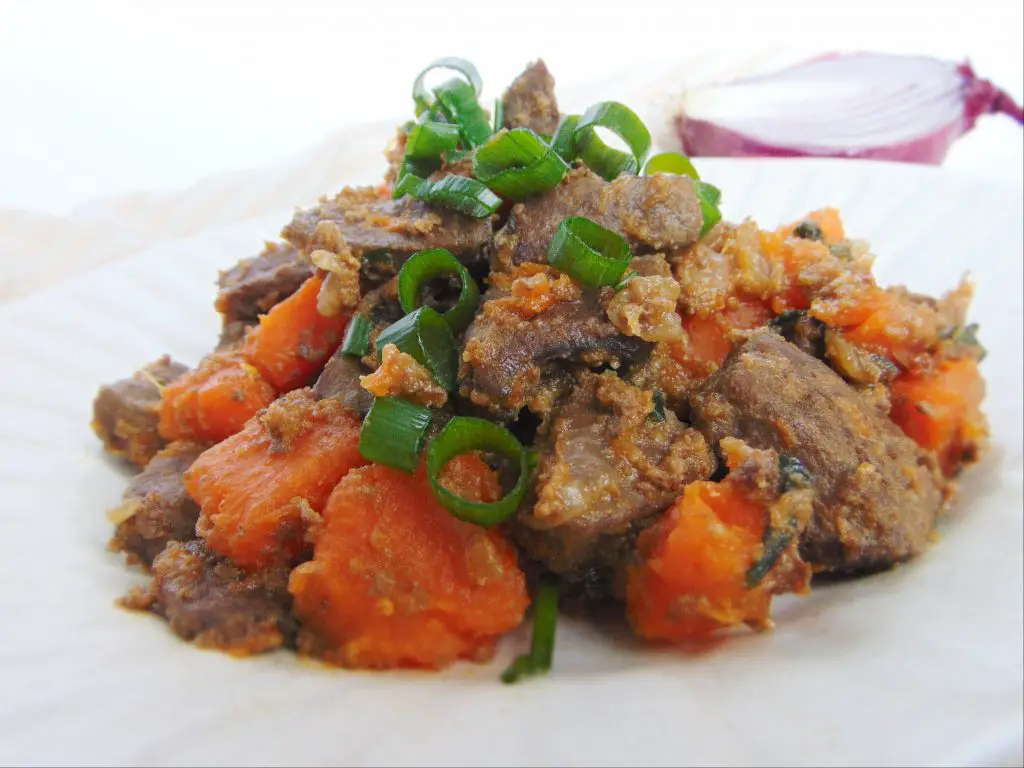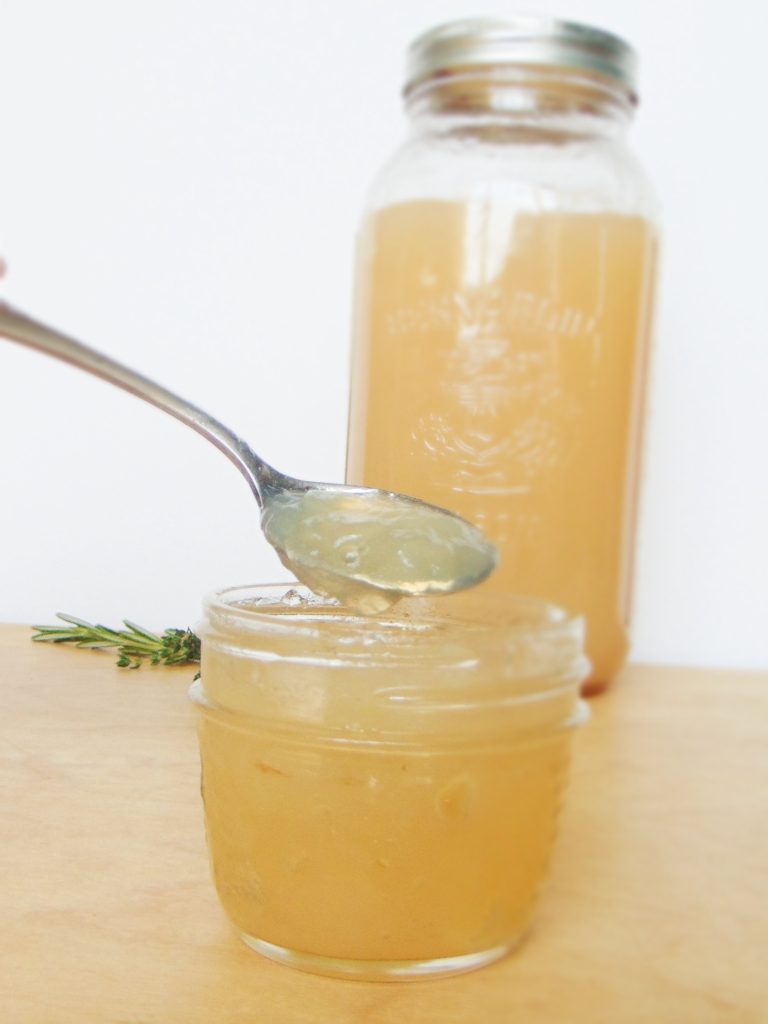Nose to tail eating is the best way to stay healthy, save money, reduce waste, and be more conscious about the environment! Learn all the health (and not only) benefits of eating nose to tail and simple recipes to get started without getting overwhelmed.

What is Nose to Tail Eating?
Eating from nose to tail is the way our human ancestors used to eat before the modern food systems got revolutionized (or should I say ruined?) by the industrial revolution and modern eating patterns. Eating nose to tail means eating and using all the parts of the animal, including:
- Muscle meat
- Organs (heart, liver, kidney)
- Skin
- Fats (tallow, lard) and fatty parts
- Short ribs, oxtail, flanks
- Tendons and cartilage
- Bones and bone marrow

This is quite different from how most modern people consume meat, mostly buying and eating only the muscle portion of the meat, including chicken breast, steaks, and pork chops.
Eating nose to tail was a necessity for our ancestors, who couldn’t afford to waste any precious calories. But guess what. They also suffered fewer chronic diseases than we do now because of the many health benefits that come from eating organs and other unpopular animal parts.
Let’s dive in and look at all these benefits!
Nose to tail eating: what are the health benefits?
Many people believe that, in order to be healthy, they should reduce (or even cut out) their meat consumption. Meat has gotten a bad reputation in recent times.
These misconceptions are mostly fueled by (surprise!!) the modern economic systems. Ever wondered why the “beyond meat” and meatless food industries are taking over?
But without venturing too much into politically incorrect talk, the modern way of eating meat can be unhealthy. Eating only (or mostly) lean muscle meat, in fact, can create nutritional deficiencies and imbalances that can lead to chronic diseases.
Eating nose to tail is the most natural and healthiest way to eat. Let’s see why!
Nose to tail eating helps balance out amino acids
Muscle meat is rich in the essential amino acid methionine, which is essential for maintaining proper body functioning. The problem is that when consumed in excess, methionine is transformed into homocysteine in our liver. Homocysteine, another amino acid, can accumulate in our blood vessels and, because it’s highly reactive, can damage blood vessels and cause chronic health conditions such as heart disease.
Our body, as the perfect machine it is, has its own mechanisms to prevent the accumulation of homocysteine that can cause damage. They mainly involve recycling homocysteine and turning it into the amino acid cysteine or back to methionine.
Homocysteine recycling, through different chemical processes, depends on the availability of certain nutrients such as folate, vitamin B12, and the amino acids glycine and serine. Guess what! Organ meats and other animal parts such as skin and tendons are particularly rich in all these nutrients that can buffer the harmful effects of methionine in your body! Isn’t nature just amazing?
In particular, glycine is abundant in collagen-rich animal parts such as skin, tendons, connective tissues, bones, oxtail, and many organs. Glycine is not only necessary to maintain a healthy amino acid balance in the body, but it also regulates inflammation, boosts antioxidant levels, and helps detoxify the liver.
When eating nose to tail you’ll naturally balance the methionine in muscle meat with the glycine in the other animal parts, preventing any “danger” associated with eating meat.

Nose to tail eating fuels your body with nutrients
Another disadvantage of eating mostly lean muscle meat is that its nutrient content is often lower than other animal parts. Eating nose-to-tail fuels your body with many essential nutrients that many people nowadays are lacking, including those that are important in maintaining optimal health and preventing chronic illness.
Liver and other organ meats are natural superfoods and are rich in essential vitamins (such as vitamin A, folate, B vitamins), minerals (such as iron, zinc, copper, and selenium), and other nutrients (such as omega-3 fatty acids and collagen). I invite you to read my post on organ meats (here) to find out more about the nutritional value and benefits of consuming different types of organ meats. If liver intimidates you, learn how all my tricks to cook the best pan-fried beef liver here!
The tougher and collagen-rich cuts of meat and animal parts such as skin, tendons, and bones (used for making bone broth, for example) are an excellent (and affordable) source of collagen and glycine. These nutrients are necessary for maintaining healthy skin, joints, muscles, and bones, and improving gut health. Read more about collagen and gelatin and all the benefits and sources here.
Fat is needed to absorb vitamins and minerals properly, as well as for maintaining hormonal balance, brain function, and a healthy immune system.

What are the other benefits of nose to tail eating?
If taking care of your health in the best and most natural way doesn’t seem enough, eating nose to tail also comes with extra benefits:
- Is cheaper
- Is more environmentally friendly and ethical
- Helps reduce waste
Just think about eating nose to tail as a way to celebrate the life of an animal by using everything. This way fewer animals will be needed to feed your family.
Buying meat in bulk, including the less popular cuts of meat also makes you save a pile of money! And organs are sold at a fraction of the cost of steaks (sometimes even given away for free)!
Eating nose to tail also reduces waste both at the production level (many times the less popular cuts and parts end up in the dump!) and at home. For example, use all the bones from your meals to make delicious and nourishing bone broth! You can even use those bones after making bone broth and turn them into homemade bone meal fertilizer for your garden, completely waste-free!
How can you get started on nose to tail eating: tips and recipes
1. Experiment with new cuts and parts
Try less popular cuts of meat such as oxtail, shanks, or organ meats such as heart. You can then transition to more “ambitious” parts.
An easy way to get started is to roast or braise a whole chicken or to eat whole small canned fish like sardines, herrings, or anchovies.
2. Eat the fat and the skin
Don’t discard the fat from the meat, and eat the skin of the chicken! You can slow-cook beef, mutton, and pig skin as well, or add it to your bone broth for an extra gelatinous batch.
3. Eat liver every week
Liver is a real superfood (read more about it here) and provides a lot of essential nutrients such as vitamin A, folate, and iron. Eating a portion of liver every week is a great way to boost your diet with nutrients, boost your health, and save some money. Learn how to cook the best pan-fried beef liver, or try this super tasty beef liver with sweet potatoes and onions. You can also “hide” the liver in this organ meat homemade breakfast sausage, or hidden liver meatloaf.

4. Save the bones for making bone broth
Whenever you roast a whole chicken or eat shanks, oxtails, or other cuts of meat with bones, save the bones to make delicious bone broth (read all the benefits of bone broth and find an easy recipe here). You can also add other collagen-rich parts such as skin, cartilage from joints, or even chicken feet to make the bone broth extra rich in gelatin.

A good trick is to keep a bag in the freezer and add the bones every time you have some until you have enough to make a batch of bone broth.
You can add bone broth to any soup or stew for extra taste and nutrition, or just sip a warm cup of bone broth as a regenerative drink.
After making your bone broth, you can get even more out of those bones and simply make your own meal bone garden fertilizer!
5. Buy your meat in bulk
Finally, a good way to start eating nose-to-tail is to buy your meat in bulk from local farmers. For example, you can get a whole mutton, or a quarter of beef.
Buying in bulk makes you save money, and you’ll get all those unusual parts that you probably wouldn’t buy from the store. Plus, when you source local grass-fed meat raised on pasture without hormones or antibiotics, you get a much higher quality, healthier meat than what you normally buy at a grocery store or butcher shop.
When you order your meat, you can express your preference about what cuts you prefer (for example more steaks, more stew meat, or more ground meat). You’ll get plenty of bones for bone broth, and you can even ask to have all the bones butchers normally discard. Don’t forget to ask for all the organs as well!

Can children eat nose-to-tail?
The answer is they should! All the benefits of eating nose-to-tail apply to children, helping them nourish their growing bodies with all the nutrients they need.
Liver and bone broth are great foods to include in children’s diets, from as early as 6 months of age, when they are ready to start solids.
Related posts on healthy Living
5 Steps to Improve your Health and Wellness (Holistic Health)
Why your Gut Health is Important and How to Improve it Naturally
The Benefits of Eating Collagen and Gelatin
The Benefits of a Grain-free Diet and What to Eat
Organ Meats: List, Health Benefits, and Recipes
Nutrient dense animal foods for pregnancy
The Primal Diet: Food List, Health Benefits, and More
Some nose to tail recipes from the blog
Roasted Chicken from Frozen (with Instant Pot)
One-Pot Braised Whole Chicken and Veggies Primal Recipe
How to Cook the Best Pan-Fried Beef Liver
How to Cook The Best Pan-Seared Beef Heart
Beef Tongue Stew in the Instant Pot Recipe
Super Tasty Beef Liver with Sweet Potatoes and Onions
Organ Meat Breakfast Sausage Recipe
Steak and Kidney Pie Easy Recipe (Grain-free, Gluten-free)
Slow-Cooked Beef Heart Stew in the Instant Pot
How to Make Bone Meal Fertilizer with Bones
Pin it for later








What a super informative article. I completely agree and loved to read about it here. I grew up with parents who came from old-world farms and would waste nothing, so I’ve been eating nose to tail since I can remember. And now I raise my own animals for meat, and I think if you raise your own animals you’re less inclined to waste any of it come butchering time too. The animal and it’s meat has so much value that way and yes, it’s a way to honor this animal. Anyway, I’ll be saving this article to share! Thanks for the valuable information!
Thank you so much, Heidi! I totally agree, if you raise and butcher your animals yourself you appreciate the values of each parts (and their life) a lot more 🙂
wow, so much good info. I definitely can see the benefits
Thank you, Megan!
I absolutely love this! My husband just started to be a butcher and we have talked about not wanting to waste anything. Thank you for writing this.
Thank you, Mara. That sounds like a great opportunity to try new cuts and things 🙂
Love this post! Such good info and so helpful now when disease is everywhere. Thank you for sharing all of the benefits!
Thank you so much, Jenny!
Great information! I made bone broth today for my upcoming 5th postpartum. And this pregnancy, I’ve been taking a great nose-to-tail prenatal with all kinds of good stuff in it. But I’ve been wanting to branch out to even more parts and cuts in cooking.
That’s wonderful, Sara! The supplements are a great alternative as well. I wish you all the best for your upcoming birth and baby 🙂
So many practical tips here—this really makes nose-to-tail eating feel doable for busy mums.
Thank you so much, Rebecca! Being a busy mom myself this makes me happy, last thing we want is to be complicated 🙂
We used to make broth all the time. Thank you so much for reminding me of the benefits. I absolutely love your site and am signing up for your newsletter!
Thank you so much, Jamie 🙂